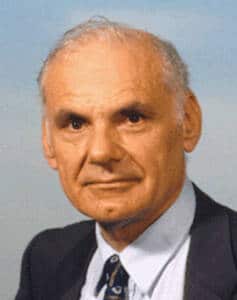Tech Portal
Tech Portal
Evolution of Machine Vision
1930s
1940s
1950s
1953 – FCC approves RS-170 image standard proposed by National Television System Committee (NTSC).
1957- NBS staff member Russell Kirsch creates the first-ever digital image.
1960s
1963 – Lawrence Roberts, the Father of Computer Vision publishes “Machine Perception Of Three-Dimensional Solids” where he discusses extracting 3D information about solid objects from 2D images. This lead to much research in MIT’s artificial intelligence lab and other research institutions looking at computer vision in the context of blocks and simple objects.
1966 – The summer project at MIT marks the landmark in the development of pattern recognition.
1970s
1973 – Ethernet is developed by Bob Metcalfe at the Xerox Palo Alto Research Center
1974 – Robotic Industries Association (origin of AIA and A3) is founded.
1976 – Bruce Bayer, an American scientist invents Bayer Filter Array and brings color imaging to digital photography.
1978 – David Marr at the MIT AI lab creates a bottom-up approach to scene understanding through computer vision. This approach starts with a 2D sketch which is built upon by the computer to get a final 3D image.
1980s
1981 – Intelledex Corporation founded by Rich Carone of Hewlett-Packard introduces first robot system with integrated machine vision platform
1984 – Automated Imaging Association (AIA) is established.
1985 – The Nippon Telegraph and Telephone Public Corporation present a handwritten kanji character OCR reader called OCR60 which becomes the first example of a large-scale system application of optical character recognition.
1990s
1996 – 1394 Trade Association introduces DCAM/IIDC 1.04 protocol that describes the exchange of data with IEEE 1394 cameras.
1996 – Sony begins the development of the first CMOS image sensor “IMX001”.
1999 – Gigabit Ethernet’s most popular variant 1000BASE-T defined by the IEEE 802.3ab standard is introduced by IEEE.
2000s
2005 – Sony introduces its first Smart Camera.
2006 – Gige Vision is introduced by AIA to standardize the delivery of video and image data over Gigabit Ethernet networks.
2007 – Emergent Vision Technologies is founded in Vancouver, Canada.
2008 – USB 3.0 standard is introduced, offering more throughput and 10x faster speed than USB 2.0.
2008 – The concept of CoaXPress is first demonstrated at VISION 2008, in Stuttgart, Germany
2010s
2012 – IIDC2 standard is introduced by 1394 Trade Association and Japan Industrial Imaging Association (JIIA)
2014 – Automated Imaging Association announces the introduction of USB 3.0 Vision standard.
2018 – Emergent Vision Technologies becomes the first company to release 25 GigE camera product line.
2020s
2020 – Emergent Vision Technologies becomes the first company to release 100 GigE camera product line.















